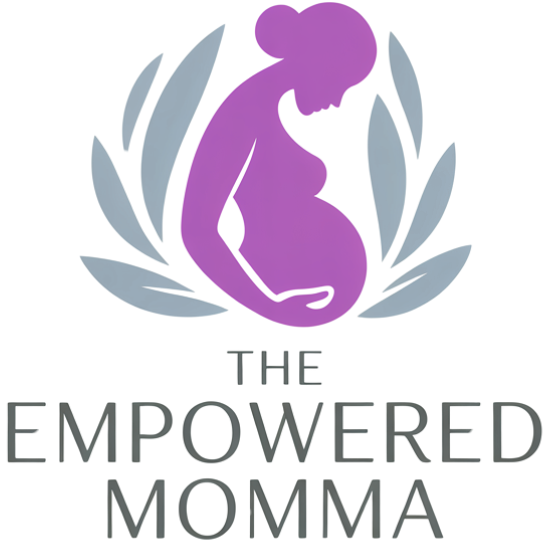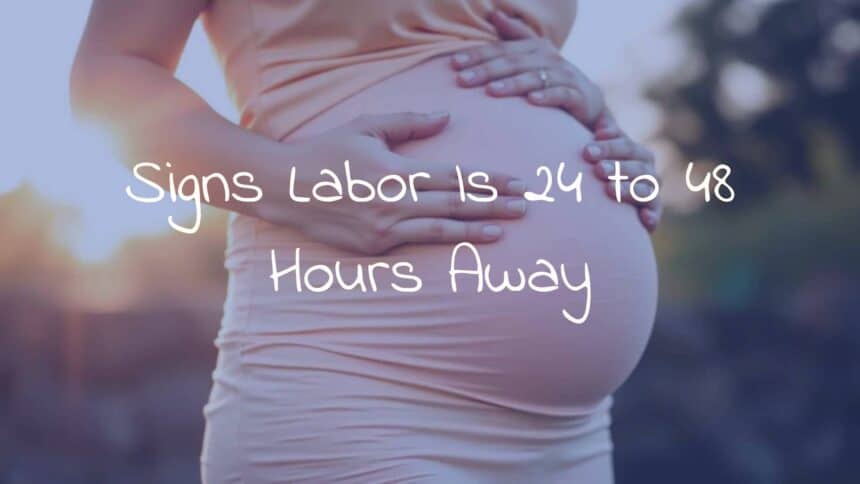As your due date gets closer, the eagerness to meet your baby often brings a mix of excitement and impatience. While no one can say exactly when labor will start, your body usually starts giving you some hints that it’s getting close. These signals can show up anytime in the last few days-or even hours-before labor really begins. Everyone experiences this a bit differently, so don’t expect your experience to match someone else’s perfectly. Think of these signs as ways your body is getting ready for birth, not as a strict list that has to happen in order.
Recognizing these signs can help you feel calmer and more prepared as the big day comes. While some are very common and well-known, others might only happen to a few people, or may not have a lot of scientific studies behind them. The most important thing is to pay attention to your own body and any changes you notice. Below, we’ll go through the common signs that labor may be 24 to 48 hours away, and how to tell them apart from a false alarm.

Common Signs Labor Is 24 to 48 Hours Away
As your body gets ready to go from pregnancy to delivery, you may notice several physical changes. These usually come after weeks of little changes, but get stronger and more obvious as labor gets closer. Watching for these signs can give you hints about when labor will start.
Lightening (Baby Dropping)
Lightening refers to when your baby moves lower into your pelvis, getting ready for birth. For first-time parents, this can happen a few weeks or hours before labor starts. If you’ve given birth before, it might not happen until just before or during labor.
The main things people notice are being able to breathe easier (because there’s less pressure on your lungs), less heartburn, but also more pressure on your bladder (which means more trips to the bathroom) and more pelvic discomfort or back pain.

Loss of the Mucus Plug
During pregnancy, a thick mucus plug covers the opening of your cervix to protect against infection. As labor nears and your cervix softens and begins to open, this plug might come out in one piece or in small amounts.
You might see mucus in your underwear or when you use the toilet. It may be clear, pink, or have a jelly-like look. Losing your mucus plug means your body is getting ready, but it doesn’t guarantee labor will start right away-it could still be days away. Sometimes the plug even grows back.
Bloody Show
Bloody show means mucus mixed with a small amount of blood. As your cervix starts to open and thin out, tiny blood vessels can break. This gives your discharge a pink or reddish tint.
You might see this days before labor, or as labor is starting. It’s stronger evidence of cervical changes compared to just losing your mucus plug, especially if you also have more contractions. If you notice a heavy flow of bright red blood (like a period), call your healthcare provider right away as it could be a sign of a problem.
Regular Contractions
This is the most definite sign that labor is close. Many people have Braxton Hicks contractions (“practice contractions”) in the third trimester, but real labor contractions are stronger, regular, and get closer together over time. Unlike Braxton Hicks, which often go away if you change position or drink water, real contractions keep getting stronger and closer no matter what you do.
They might start off feeling like cramps or a dull ache. As they get stronger, you may not be able to walk or talk through them. You can time them-when they come regularly (like every 5 minutes) and last about a minute, it means labor is beginning or about to begin.

Water Breaking
When the amniotic sac breaks and fluid leaks or gushes out of your vagina, it’s called your water breaking. Sometimes this is a big gush (like in movies), but more often it’s a slow leak.
Once your water breaks, labor usually starts soon after. Even if contractions haven’t begun yet, call your healthcare provider right away. You might need to go to the hospital because the baby now has less protection from infection.
Cervical Dilation and Effacement
Your doctor or midwife may check how much your cervix has opened (dilation, measured in centimeters) and how thin it has gotten (effacement, given as a percent). Dilation up to 2-3 cm and especially more can suggest that labor will start soon, though it’s possible to be dilated for days before true labor begins.
Increased Pelvic Pressure
As your baby moves further into your pelvis, you may feel a heavy, pressing feeling in your lower pelvis or vagina. Some people describe it as the baby “pushing down.” It may make walking harder.
Nesting Urge
Sometimes, people feel a burst of energy and a sudden need to clean, organize, or get things ready at home. This “nesting instinct” can show up any time in late pregnancy, but some report it just before labor.
If you suddenly have the urge to wash floors, organize clothes, or prepare your bag for the hospital, you’re not alone-but don’t overdo it! Save some energy for labor.
Diarrhea or Upset Stomach
Loose stools or tummy troubles are common in the day or two before labor for some. Hormones that help your cervix and uterus get ready may also affect your stomach and bowels. If this happens, drink plenty of fluids.
Back Pain and Cramps
Back pain is normal in pregnancy, but it may get worse just before labor. It can feel like a strong, aching pain that does not go away when you change position. Sometimes, it comes with cramps that feel like a period. These can turn into regular contractions as labor goes on.
Looser Joints
Your body makes hormones that loosen your joints and ligaments so your pelvis can open for birth. Just before labor, you may feel your hips are more flexible or even “wobbly.” This is normal, though it can make you feel less steady.
Changes in Vaginal Discharge
Besides the mucus plug and bloody show, your discharge might look different-maybe more watery, sticky, or thick. If you see a pink tinge, it’s likely normal. Watery discharge that keeps coming may be your water breaking. If you see yellow, green, gray, or smell something odd, call your provider-it could be an infection.
| Sign | What It Means | What To Do |
|---|---|---|
| Lightening | Baby drops lower; easier breathing, more pelvic pressure | Note any new symptoms |
| Mucus Plug Loss | Mucus comes out from the vagina | Normal unless heavy bleeding occurs |
| Bloody Show | Mucus with blood; cervix changing | Watch for contraction patterns |
| Contractions | Regular, stronger, closer together | Time them; prepare for hospital when regular |
| Water Breaking | Leaking or gush of fluid | Contact provider right away |

How Are These Signs Different from False Labor?
Telling real labor from false labor, or Braxton Hicks contractions, is a common problem. Sometimes, your body “practices” with real-feeling cramps but is not yet ready for labor.
False labor contractions are often weak, irregular, and may stop if you walk, rest, or drink water. Real contractions become regular, stronger, and do not stop no matter what you do.
| True Labor | Braxton Hicks |
|---|---|
| Get stronger, closer, and regular over time | Stay the same strength or get weaker, are irregular |
| Do not go away with movement or rest | Often stop with rest, changing position, or drinking water |
| May start in back or belly, may spread | Usually in front of belly only |
With false labor, aches and pains can come and go. With real labor, all symptoms (like pressure, contractions, discharge) keep moving in one direction-more intense and frequent. If you’re not sure, keep track for an hour or two. If nothing is changing, it’s likely false labor. If symptoms build up, it’s more likely the real thing.

When Should You Call Your Doctor or Go to the Hospital?
It can be hard to know when it’s time for medical help, especially with your first baby. Most early labor signs can be watched at home, but some things mean you should get checked right away. If you’re worried about anything, it’s always OK to call your doctor or midwife.
Timing Contractions
If this is your first baby, it’s standard to go to the hospital when your contractions are about 3 or 4 minutes apart, last 1 minute each, and this goes on for 1-2 hours. Some caregivers use the “5-1-1” or “4-1-1” rule-5 (or 4) minutes apart, 1 minute long, for 1 hour. If you’ve had a baby before, you might be told to go in a little sooner because labor can be faster.
If you can’t walk or talk through contractions, it’s probably time to go in-no matter how far apart they are.
Signs You Need Care Right Away
- Water breaking: Call your provider whether it’s a big splash or a slow leak, even if you have no contractions yet.
- Heavy vaginal bleeding: If you bleed like a period or bright red blood, get help now.
- Less baby movement: If your baby isn’t moving as much as usual, call your provider.
- Strong pain that won’t stop: If you have bad, steady abdominal pain, chest pain, or a headache that won’t go away-seek care.
- Vision changes: Blurred vision or seeing spots can be a sign of preeclampsia.
- Severe swelling: Big or sudden swelling in your face, hands, or arms may also mean preeclampsia.
- Fever: If you get a fever and other symptoms, you may have an infection.
Trust your gut. If something does not feel right or you’re worried, call or go in to have it checked. Your care team is there to help you.
Frequently Asked Questions About Labor Signs Within 24 to 48 Hours
Is nausea a clear sign labor is about to start?
Nausea can be one of the signs that labor is near, but it isn’t a sure sign by itself. Some people feel sick to their stomach right before or during labor because of pain, hormones, or their digestive system slowing down.
However, nausea is common during pregnancy for many other reasons. If your nausea is severe or comes with other problems, such as high blood pressure, call your healthcare provider.
Can you lose your mucus plug but not go into labor?
Yes-losing your mucus plug means changes are happening to your cervix, but labor sometimes doesn’t start right away. You could lose it weeks before labor. Sometimes, another plug forms before labor actually starts. It’s just one piece of the bigger picture.
Does everyone have the same labor signs?
No-everyone’s path to labor is different. You may have all, some, or none of these signs before labor begins. Some people experience certain symptoms strongly, while others notice little or nothing until contractions start. Watch for your own body’s signals and talk with your doctor as needed. Your labor is unique to you.

